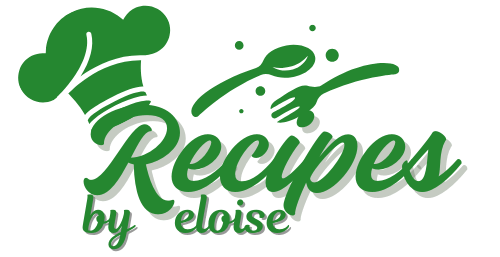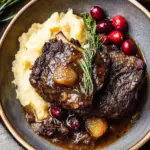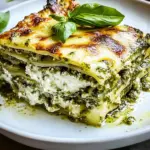The Escabeche de Pescado is a vibrant and traditional Puerto Rican dish that fuses the bold flavors of marinated red snapper with a vinegary, olive-rich escabeche sauce. It’s a celebration of both sea and spice, served cold or at room temperature, making it ideal for warm-weather gatherings or elegant holiday meals.
What makes this dish a standout is the complexity from the tangy red wine vinegar and smooth olive oil, balanced by the tender fish and the burst of briny olives. It’s simple to prepare yet rich in flavor—an essential for lovers of Latin cuisine looking to explore a heritage recipe passed through generations.
Full recipe:
Ingredients:
For the Escabeche Sauce:
-
1 cup extra virgin olive oil
-
½ cup red wine vinegar
-
6 to 7 whole peppercorns
-
½ cup Manzanilla olives stuffed with pimientos
-
1 red bell pepper, julienned
-
¾ lb. onions, thinly sliced
-
¼ cup roasted red peppers, sliced
For the Fish:
-
1½ lbs. red snapper (or other firm white fish), cut into 1-inch steaks
-
2 tbsp lemon juice
-
2 tbsp GOYA® Adobo All-Purpose Seasoning with Pepper
-
½ cup extra virgin olive oil
-
½ tsp minced garlic
-
All-purpose flour (for dredging)
Directions:
-
Prepare the Escabeche Sauce:
In a saucepan, combine olive oil, red wine vinegar, peppercorns, olives, red peppers, and onions. Bring to a low simmer and cook for 45 minutes. Remove from heat and allow to cool completely. -
Prepare the Fish:
Rinse the fish steaks under cold water and pat dry. Drizzle with lemon juice and season with Adobo seasoning. Lightly coat both sides with flour. -
In a large skillet, heat olive oil and garlic over medium-high heat. Fry fish steaks until golden brown on both sides, about 4–5 minutes per side. Lower the heat and cook for an additional 10–15 minutes until the fish is tender and flakes easily.
-
Pour the cooled escabeche sauce over the fried fish. Let the dish rest for several hours or overnight in the fridge to allow the flavors to meld. Serve chilled or at room temperature.
Prep Time: 10 minutes | Cooking Time: 50 minutes | Total Time: 60 minutes
Kcal: ~420 kcal per serving | Servings: 6 servings
Flavor Profile and Ingredients
The flavor of Escabeche de Pescado is rich, tangy, and complex, thanks to the interplay between acidic red wine vinegar, the fruity warmth of olive oil, and the pungent sweetness of slowly cooked onions and peppers. The briny burst of Manzanilla olives adds depth and character to the dish, giving it a sophisticated Mediterranean touch that reflects its Spanish ancestry.
Though simple in composition, the sauce is nuanced in taste, and its slow simmering process allows every ingredient to contribute to the overall harmony. The fish itself, after being fried to a golden crisp, absorbs the sauce over time, becoming tender and aromatic. The result is a dish that is both refreshing and comforting, perfect for tropical climates and celebratory tables.
Traditional and Modern Preparations
Traditionally, Escabeche de Pescado is made in large batches and served as part of festive spreads. It’s often prepared a day in advance to allow the fish to marinate thoroughly in the escabeche sauce. The chilled nature of the dish also makes it a practical choice for events, as it doesn’t require reheating and can sit out at room temperature for extended periods.
Modern interpretations may vary slightly, incorporating different types of fish such as grouper, cod, or tilapia. Some cooks add bay leaves, capers, or even spicy peppers to the escabeche for a kick. Others might opt for grilling the fish instead of frying for a lighter version. However, the core elements remain consistent—fried fish, vinegar-based sauce, and an aromatic medley of vegetables.
In terms of presentation, many people garnish the finished dish with fresh herbs, lemon wedges, or additional olives. Served in a shallow platter to showcase the vibrant colors and layers of ingredients, Escabeche de Pescado is as much a visual feast as it is a culinary one.
Health and Nutritional Considerations
Despite its indulgent flavor, Escabeche de Pescado can be a relatively healthy dish. Red snapper is a lean source of protein and rich in omega-3 fatty acids, which are beneficial for heart and brain health. The sauce, though oil-based, primarily uses extra virgin olive oil—a healthy fat known for its anti-inflammatory properties and heart-protective benefits.
Additionally, the dish is packed with nutrient-dense vegetables like onions and bell peppers, which provide vitamins, minerals, and antioxidants. The use of vinegar may also aid digestion and stabilize blood sugar levels, while olives contribute healthy fats and anti-inflammatory compounds.
To reduce the calorie count or fat content, one could shallow-fry or oven-bake the fish instead of deep-frying. Similarly, moderating the amount of oil in the escabeche sauce can make the dish lighter without sacrificing too much flavor.
When and How to Serve Escabeche de Pescado
Escabeche de Pescado is often featured during the holiday season, especially around Christmas and New Year in Puerto Rico. Its make-ahead nature and ability to be served chilled make it ideal for entertaining large groups. It’s also a popular offering during Semana Santa (Holy Week), when many households avoid red meat and turn to seafood instead.
As a versatile dish, it pairs beautifully with various sides. Boiled yuca or green bananas are traditional accompaniments, offering a starchy counterbalance to the vinegary tang of the fish. White rice is another common pairing, absorbing the flavorful sauce and rounding out the meal. For a lighter option, a fresh green salad or tostones (fried plantains) can be served alongside.
In a more contemporary setting, Escabeche de Pescado can be featured as a tapa (appetizer) or the star of a multi-course Latin fusion dinner. It’s also a fantastic option for potlucks and picnics, given its portability and resistance to spoilage when kept cool.
Escabeche Beyond Fish
While Escabeche de Pescado is perhaps the most famous version, the escabeche method can be applied to various proteins and even vegetables. In Puerto Rico, chicken and eggplant are sometimes used as alternatives, offering vegetarian and poultry-friendly options that still embrace the hallmark tang of the escabeche sauce.
This versatility allows escabeche to be a culinary technique rather than a singular recipe. Home cooks can experiment with tofu, mushrooms, or even roasted cauliflower as the base, allowing the escabeche sauce to shine in a variety of contexts. It’s a testament to the enduring appeal and adaptability of this cooking style, which can fit into both traditional and modern dietary needs.
Culinary Tips and Tricks
Achieving the perfect Escabeche de Pescado lies in attention to detail during the cooking and marinating process. First, the fish should be properly dried and lightly dredged in flour before frying to create a crisp outer layer that will absorb the sauce without becoming soggy. The frying oil must be hot enough to brown the fish quickly without overcooking it.
For the escabeche sauce, slow cooking is essential. Onions should be allowed to soften and become translucent without browning, ensuring a mellow sweetness that complements the vinegar. Using high-quality extra virgin olive oil and vinegar makes a noticeable difference, as these ingredients dominate the dish’s flavor.
Once assembled, patience is key. The fish should marinate in the sauce for at least a few hours, ideally overnight, in a glass or ceramic dish to avoid any metallic reactions with the vinegar. This resting period allows all the flavors to mingle and intensify.
Cultural and Emotional Connection
For many Puerto Ricans, Escabeche de Pescado is more than a dish—it’s a memory, a celebration, a connection to heritage. Preparing it is often a communal activity, with family members contributing different elements and stories being shared over the stovetop. It symbolizes abundance, warmth, and tradition, holding a place of honor on the dining table during key moments of the year.
As food trends shift and evolve, dishes like this one serve as cultural anchors, reminding us of where we come from and what flavors shaped our childhoods. The act of making escabeche is also an act of preservation—of recipes, of customs, and of identity.
Conclusion
Escabeche de Pescado is a timeless and elegant dish that embodies the richness of Puerto Rican culinary tradition. Its harmonious blend of tangy, briny, and savory flavors is both comforting and invigorating, making it a standout in any feast. Versatile, nutritious, and make-ahead friendly, it remains a staple in both everyday cooking and celebratory spreads.
Beyond its flavor, Escabeche de Pescado offers a story—a story of heritage, adaptation, and shared joy. Whether you’re new to Latin cuisine or a seasoned aficionado, this dish promises an experience that satisfies both palate and soul.






